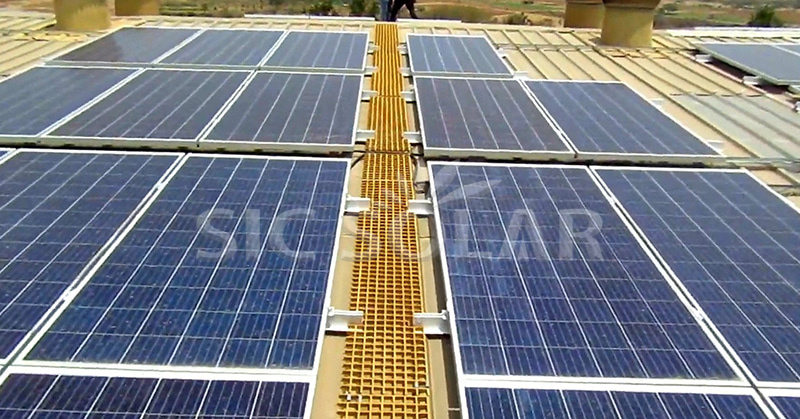FRP walkways—short for Fiberglass Reinforced Plastic walkways—are widely used in industrial, commercial, and solar applications to provide safe, non-slip paths across rooftops, platforms, and work zones. But how wide should an FRP walkway be?
Standard Widths for FRP Walkways
The width of an FRP walkway typically depends on its intended use and safety requirements. Common widths include:
- 300 mm (about 12 inches) – Minimal width, often used for single-person access in tight areas.
- 500–600 mm (20–24 inches) – Standard width for maintenance paths.
- 800–1000 mm (32–40 inches) – Suitable for two-way foot traffic or areas requiring equipment access.
The most commonly used size in rooftop solar installations is 600 mm to 800 mm, as this provides enough room for safe maintenance without taking up excessive space on the roof.
Factors That Influence FRP Walkway Width
- Safety Regulations: Some industries or building codes specify minimum walkway widths for safety and accessibility.
- Roof Layout: In solar projects, space between panels and roof edges determines how wide the walkway can be.
- Purpose of the Walkway: Is it just for inspection, or will it support tools and equipment movement?
FRP Walkways in Solar Projects
In solar installations, FRP walkways are often installed alongside PV arrays to provide safe access for maintenance crews. They’re preferred because they’re:
- Lightweight
- Corrosion-resistant
- Non-conductive
- Easy to install without damaging the roof membrane
SIC Solar Involvement
SIC Solar, a manufacturer of solar mounting systems, also supports rooftop safety solutions like FRP walkway integration. While their core products focus on PV racking structures, SIC Solar understands the importance of safe access in solar projects and provides compatible mounting accessories to integrate FRP paths into the overall system design.

The width of an FRP walkway should match its purpose, site constraints, and local safety requirements. For most solar applications, 600 to 800 mm is standard. Ensuring that the walkway is properly supported and well-integrated—especially with help from experienced manufacturers like SIC Solar—makes for a safer and more efficient installation.